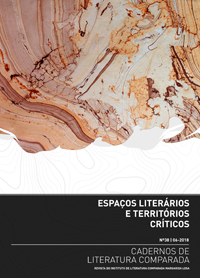Espaços em volta: percursos imaginantes em "L’horizon" de Patrick Modiano e "A Amante Holandesa" de J. Rentes de Carvalho
DOI:
https://doi.org/10.21747/21832242/litcomp38a9Keywords:
Topoanalysis, Setting, Imagology, Rentes de Carvalho, Patrick ModianoAbstract
The disposition and architecture of spaces in literary texts are crucial elements for the construction of spatial imagery of cultural life. Bertrand Westphal advocates for the relevance of literary geocriticism, which according to the author should transcend the study of “how space is represented in literature” and examine “the interactions between human spaces and literature”. Westphal additionally states that if we consider how “the other” is represented to be crucial for the construction of self-images, then the study of the ways in which space is conceived and inhabited/lived in is fundamental for “the determination/indetermination of cultural identities”.
The following work is based on the aforementioned theoretical principles, and its main goals will be to understand the interaction between topophobia and topophilia in the work of J. Rentes de Carvalho (mainly in A Amante Holandesa), and to interpret the meaning(s) of urban topophilia in the work of Patrick Modiano (mainly in L’horizon). Focusing on the different ways in which space is fictionally approached and on the analysis of both the differences and the analogies between the perspectives that are set in motion by both authors, we will aim to explore the complexity of the imaginative potential of space in literature.


